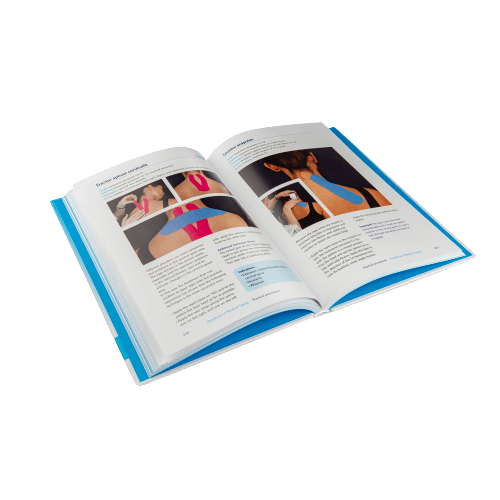Hypertrophic scars can be challenging to manage due to their thick, raised appearance and the discomfort they often cause. These scars result from an overproduction of collagen during the wound healing process, leading to a dense, elevated tissue that can feel tight, itchy, or even painful. Burns are a common example of injuries that may result in hypertrophic scarring. Fortunately, CureTape® Kinesiology tape offers a gentle and effective way to support the healing process and improve the condition of hypertrophic scars. By using a specific taping technique, CureTape® can help to reduce tissue tension, improve blood flow, and alleviate discomfort. This non-invasive approach provides a promising solution for anyone looking to enhance scar healing and minimize the impact of hypertrophic tissue.
Get started with these items to tape your hypertrophic scars
-
CureTape® Classic Kinesiology Tape
-15%Bestseller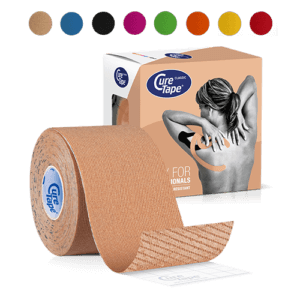 $16.96
In stockSelect options This product has multiple variants. The options may be chosen on the product page
$16.96
In stockSelect options This product has multiple variants. The options may be chosen on the product page -
CureTape® Punch Kinesiology Tape
-15% $18.66
In stockSelect options This product has multiple variants. The options may be chosen on the product page
$18.66
In stockSelect options This product has multiple variants. The options may be chosen on the product page -
CureTape® Gentle – Kinesiology Tape for sensitive skin
-15%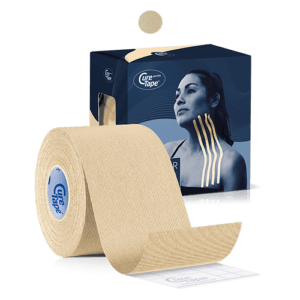 $20.36
In stockAdd to cart
$20.36
In stockAdd to cart -
CureTape® High Quality Scissor
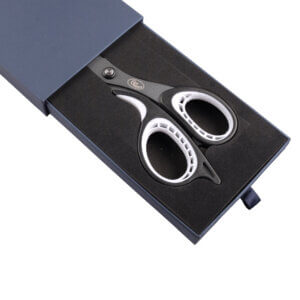 $24.95
In stockAdd to cart
$24.95
In stockAdd to cart

Christina’s advice when taping scars
When taping around scars, it’s crucial to choose a tape that stays on well, but is most of all very gentle on the skin. That’s why I recommend CureTape kinesiology tape. For regular use, CureTape Classic or Punch is ideal. Use Punch if you want more breathability around the scar area. If you have very sensitive skin, or the area around the scar is still very freshly healed, I recommend to use CureTape Gentle for sensitive skin!
OSCARE study: the effect of CureTape on thickened scar tissue
The effects of elastic therapeutic tape on hypertrophic scars: a cohort study.
Peter Moortgat, OSCARE, Belgium – 7 December 2020
Download the full study on medical taping for hypertrophic scars.
- The colour of the skin and the scar
- The transepidermal water loss (fluid from the skin)
- Stretchiness and elasticity of the skin
- Thickness of the scar
- Hydration (moisture absorption) of the scar
- Itching
Tapestry technology chosen by OSCARE for this study
In all phases of the project, the elastic therapeutic CureTape is applied in the same way: a notch is made in the middle of the tape, lengthwise. Do not cut the anchors (beginning and end of the tape) when doing this. Then, the tape is applied around the scar tissue, but the tape does not make contact with the scar tissue. This is very important, as tape is not to be used over wounds or fresh scar tissue! The tape is worn for 2 days, then removed to allow the skin to rest (at least 24 hours). A new tape is then applied.
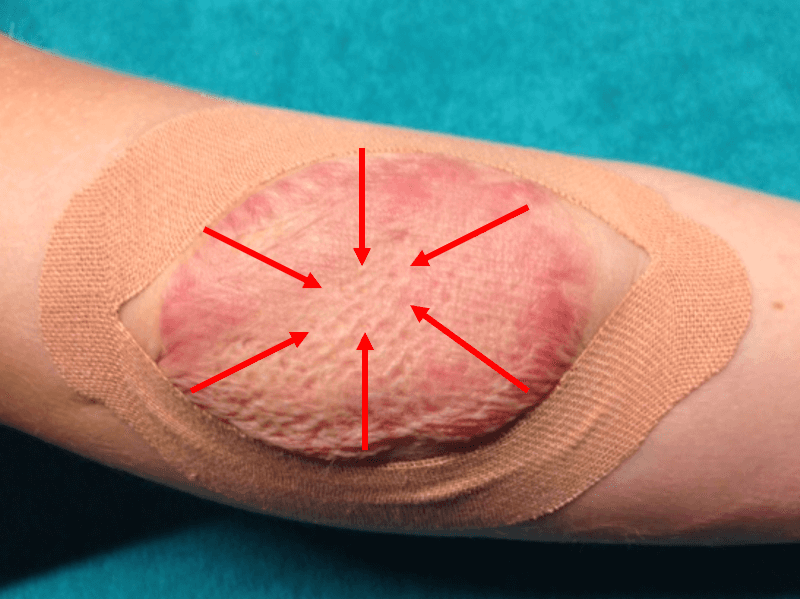
Results of the study on taping for scars
The study showed a statistically significant improvement in terms of itching, skin thickness, colour and elasticity. CureTape® kinesiology tape appears to have a beneficial effect on scars when applied with this specific technique. It is recommended that a further randomized controlled trial (RCT) be conducted to confirm the results of this cohort study.
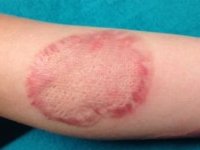
Background information on wound healing and scars
Wound healing can be divided into 3 phases:
- Inflammation phase: 1-4 days.
Wound healing, scar tissue with collagen fibres is produced. - Recovery phase (regeneration phase): 4 days – 3 weeks.
New tissue is formed. - Maturation phase: from 3 weeks.
In this phase, a balance between production and degradation of collagen fibres occurs.
When the wound healing process is disturbed, scarring problems arise.
Disruptions can be: infection, poor general condition, poor circulation, location on the body, age of the client.
Fibroblasts are the most important cells of the connective tissue, they produce collagen fibres. Collagen fibres are non-stretchable fibres that provide strength. Fibroblasts also play a role in wound healing. They can transform into myofibroblasts, which seal the wound and are responsible for the production of scar tissue consisting mainly of collagen fibres.
What scar treatment techniques are available within the Kinesiology taping Concept?
Within the Medical Taping Kinesiology taping Concept, various taping techniques and possibilities are known for taping scars and treating oedema and lymphatic problems. Are you, as a health professional, interested in these techniques, please have a look at the manual by David Blow, NMT Taping of Edemas, Hematomes and Scars. This is a very comprehensive, rehabilitation-oriented handbook on various drainage options for oedema, haematoma and scars. It is also supported by many practical examples!
Learn how to tape
- The Ultimate Taping Guide: Focuses on self-taping for the 30 most common injuries where taping provides support.
- Kinesiology Taping Method Manual: Designed for (para medical) professionals, covering basic taping techniques and various pathologies.
- Decompressive Taping Techniques Manual: Specifically focuses on lymphatic taping methods for decompression.
What are you waiting for? Order a copy today!
THYSOL is the manufacturer of the kinesiology tape brand CureTape. As CureTape, we have been training and supplying professionals for 25 years. And consumers now know how to find us too! By manufacturing all our tapes in our own factory, we can guarantee the best quality!
Please note that the indicated tape applications and information on our website about the possibilities with kinesiology tape have not yet been scientifically proven. The statements and examples mentioned are based on long-term experiences of patients and trained therapists.
Contraindications not to tape: pregnancy, open wounds, broken bones, unexplained complaints, allergies and skin diseases, use of medication such as blood thinners, thrombosis and fever. Always apply tape in consultation with a specialist.

